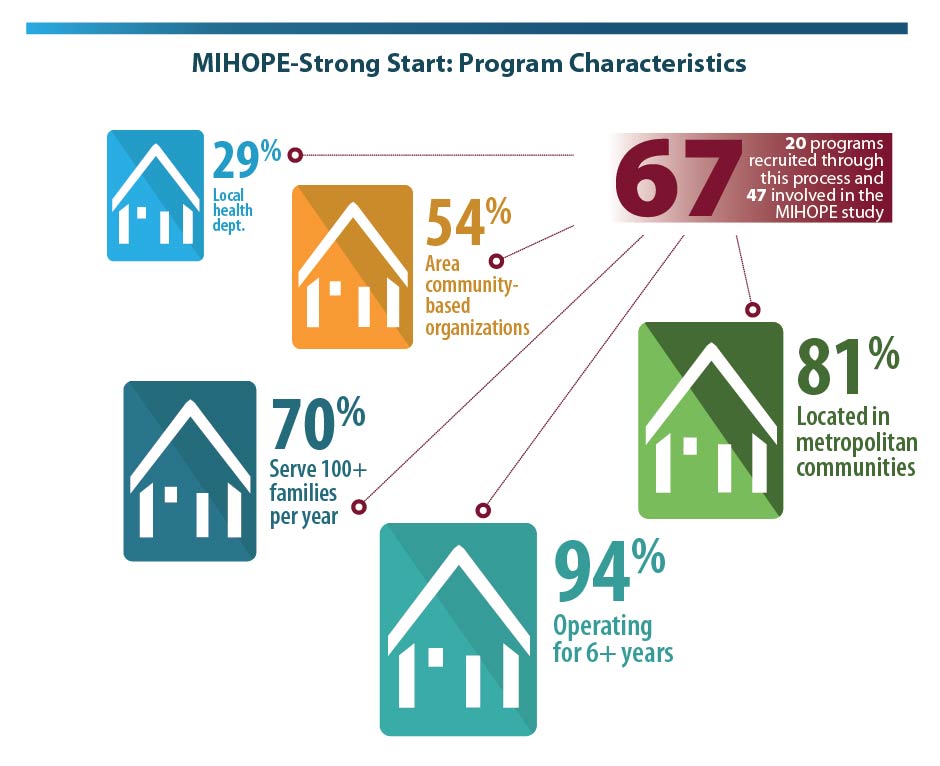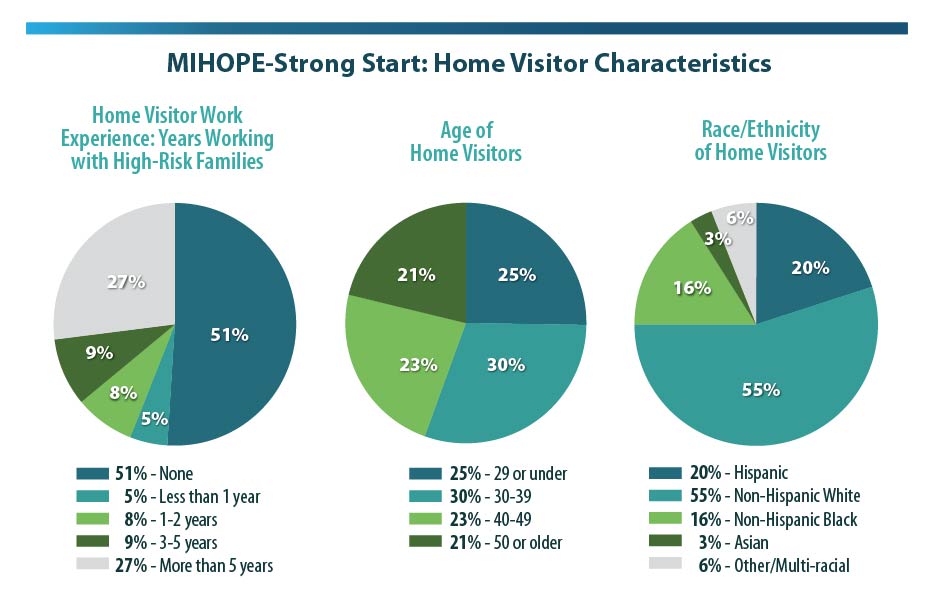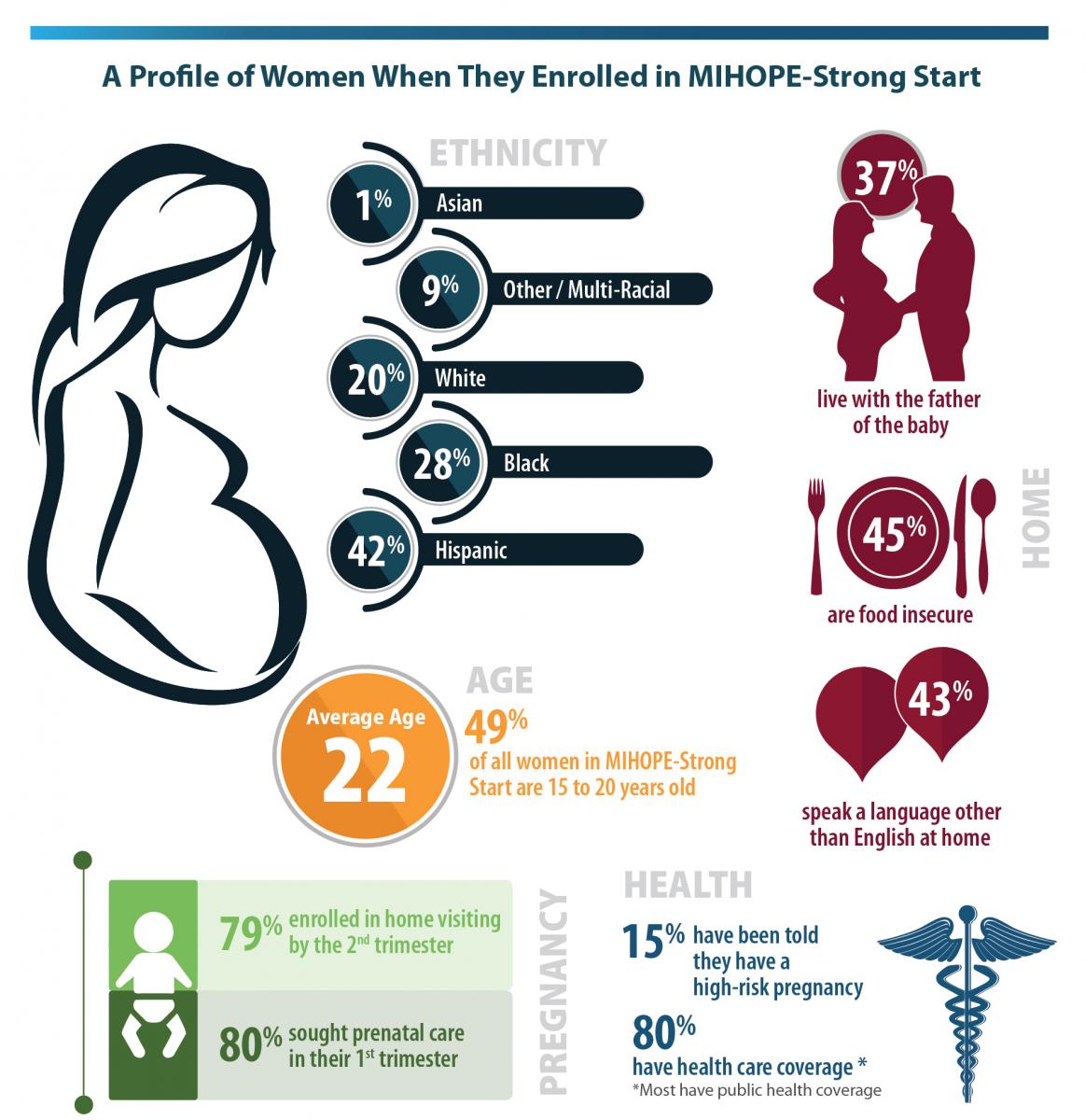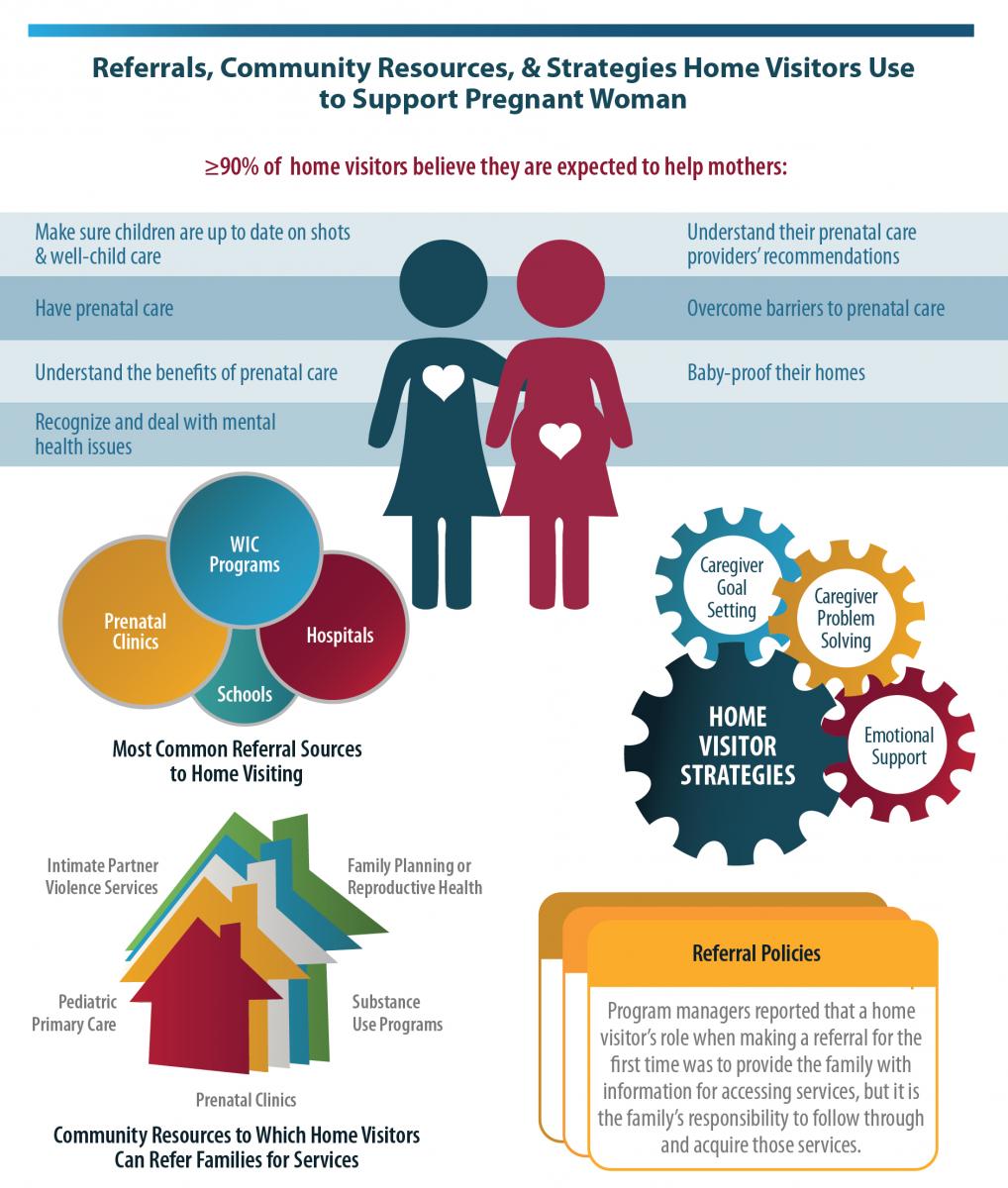
MIHOPE-Strong Start: Site Selection and Program Characteristics
When MIHOPE-Strong Start began, Healthy Families America (HFA) and the Nurse-Family Partnership (NFP) had an estimated 800 programs (approximately 580 HFA and 220 NFP) operating nationwide. Some of these local programs were already participating in MIHOPE, a companion study to MIHOPE-Strong Start. Programs participating in MIHOPE that also met the eligibility requirements for MIHOPE-Strong Start were automatically included in MIHOPE-Strong Start. The study team also went through an intensive selection process to identify, meet with, and ultimately enroll additional programs into MIHOPE-Strong Start. Initially, the study team was looking for local HFA and NFP programs that:
- had been operating for at least two years,
- employed at least three full-time home visitors (to ensure adequate sample enrollment at each program), and
- served a prenatal client population of which approximately 80 percent or more were covered by Medicaid or the Children’s Health Insurance Program by the time of the infant’s birth.
Approximately 435 local programs were eligible to participate in the study, based on these criteria. To continue to narrow the pool of potential program sites, the study team consulted with model developers and state home visiting leaders. Strategic outreach activities ensured that a balance of states and program models would be represented in the study. The study team reached out to an estimated 230 programs across 22 states and subsequently met with 165 local programs. Programs had to be interested in participating and had to serve an area with more demand than its services could meet, in order to conduct random assignment ethically. With these criteria in place, the selection process resulted in 20 local programs not already participating in MIHOPE enrolling in the study. When combined with HFA and NFP programs involved in MIHOPE, the study will draw information from a total of 67 local home visiting programs across 17 states. The graphic below summarizes a few key characteristics of these local programs.

These 67 programs employed 385 home visitors who served the 2,908 families enrolled in MIHOPE-Strong Start. All the home visitors surveyed were female and the majority (74%) had a bachelor’s degree or higher. Most HFA home visitors (68%) had studied psychology or social work/welfare, whereas all NFP home visitors had studied nursing. Home visitors vary in age, race, and experience working with high-risk families.

A Profile of Women When They Enrolled in MIHOPE-Strong Start
MIHOPE-Strong Start includes pregnant women enrolled in either Healthy Families America (HFA) or Nurse-Family Partnership (NFP). The following graphic highlights characteristics of the portion of the sample (1,221 families, or 40% of the final sample) for whom data were available at the time the MIHOPE-Strong Start Third Annual Report was written. These characteristics describe the families at the time they enrolled in the study and before they began receiving any home visiting services.[1]
The health of infants begins with the health and well-being of their mothers. The descriptive statistics below highlight families’ demographic characteristics, as well as family risks and strengths related to improving birth outcomes and child well-being.

[1] No major changes in the characteristics of families are expected when the final sample is analyzed .
Referrals, Community Resources, and Strategies Home Visitors Use to Support Pregnant Woman
Local home visiting programs involved in MIHOPE-Strong Start provide a range of services to help support pregnant women. An overview of reported local home visiting programs’ referral sources, availability of community resources, and strategies and tools home visitors are encouraged to use are highlighted in the graphic below.

MIHOPE and MIHOPE-Strong Start News
Cost study in its second year. Throughout 2015, the research team gathered budgets from participating MIHOPE programs and information on the time home visitors spend working directly with families. This information will be used to answer questions about the cost of operating a home visiting program. Study questions include: What is the typical cost of home visiting for each family? Are the costs different for families who enter home visiting with different risks? How do the costs of providing home visiting compare with the improvements they make in outcomes for parents and children?
Two follow-up surveys are currently being collected. MIHOPE families who now have a baby that is at least 15 months old or 2½ years old are participating in surveys and in-home data collections to assess the longer-term impacts of home visiting programs. Interviewers are asking participating families about such topics as child and parental health, parenting style, child development, and social services used.
Another follow-up survey will begin in summer 2016. Starting this summer, the MIHOPE team will be asking families who have a 3½-year-old child to complete a brief survey to help the study continue to track social, physical, and family trends over time.
Twelve child welfare agreements are in place. State child welfare agencies, responsible for child protection, will provide some of the data that MIHOPE will use to measure the impacts of home visiting. The study team has now finalized data-sharing agreements with the child welfare agencies in all 12 states where MIHOPE is operating.
Largest random assignment home visiting studies. MIHOPE and MIHOPE-Strong Start are the largest random assignment studies to date to examine the effectiveness of home visiting services across a variety of outcomes. Random assignment studies are important to the field because they allow researchers to compare two like groups of people. In both MIHOPE and MIHOPE-Strong Start, one group of study participants receives home visiting and the other group receives other community-based services. This allows the study team to draw conclusions about the effects of home visiting above and beyond the other services that are available in the community.



